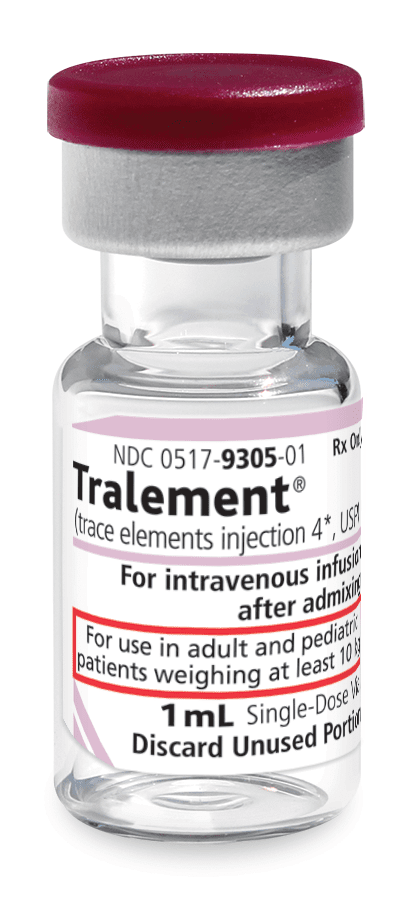Tralement Disease Interactions
There are 4 disease interactions with Tralement (copper sulfate / manganese sulfate / selenium / zinc sulfate).
Chromium/selenium/zinc (applies to Tralement) renal dysfunction
Moderate Potential Hazard, Moderate plausibility.
The trace metals, chromium and zinc, are excreted primarily in the urine. Selenium is partially excreted in the urine. Supplemental doses of these agents may need to be adjusted, reduced, or omitted in patients with renal dysfunction.
Copper/manganese (applies to Tralement) elimination
Moderate Potential Hazard, Moderate plausibility. Applicable conditions: Biliary Obstruction, Liver Disease, Biliary Obstruction, Liver Disease
The trace elements, copper and manganese, are excreted in the bile. Copper and manganese doses may need to be adjusted, reduced, or omitted in patients with liver disease or biliary obstruction.
Manganese preparations (applies to Tralement) renal impairment
Moderate Potential Hazard, Moderate plausibility. Applicable conditions: Renal Dysfunction
Manganese sulfate and manganese chloride preparations contain aluminum and may reach toxic levels with prolonged parenteral administration if kidney function is impaired. Premature neonates are particularly at risk because their kidneys are immature, and they require large amounts of calcium and phosphate solutions, which also contain aluminum. Patients with impaired kidney function, including premature neonates, who receive parenteral levels of aluminum at greater than 4 to 5 mcg/kg/day accumulate aluminum at levels associated with central nervous system and bone toxicity. Tissue loading may occur at even lower rates of administration. Caution is advised in patients with renal impairment, particularly in premature or neonates patients.
Trace metals (applies to Tralement) malabsorption syndromes
Moderate Potential Hazard, Moderate plausibility.
The trace metals manganese, chromium, copper, selenium, and zinc are absorbed in the GI tract from dietary sources and following administration of oral supplements. GI absorption may be decreased in patients with malabsorption syndromes. Therefore, larger dosages may be required when these supplements are given orally. Parenteral administration may be appropriate.
Switch to professional interaction data
Tralement drug interactions
There are 156 drug interactions with Tralement (copper sulfate / manganese sulfate / selenium / zinc sulfate).
Drug Interaction Classification
| Highly clinically significant. Avoid combinations; the risk of the interaction outweighs the benefit. | |
| Moderately clinically significant. Usually avoid combinations; use it only under special circumstances. | |
| Minimally clinically significant. Minimize risk; assess risk and consider an alternative drug, take steps to circumvent the interaction risk and/or institute a monitoring plan. | |
| No interaction information available. |
See also:
Further information
Always consult your healthcare provider to ensure the information displayed on this page applies to your personal circumstances.


